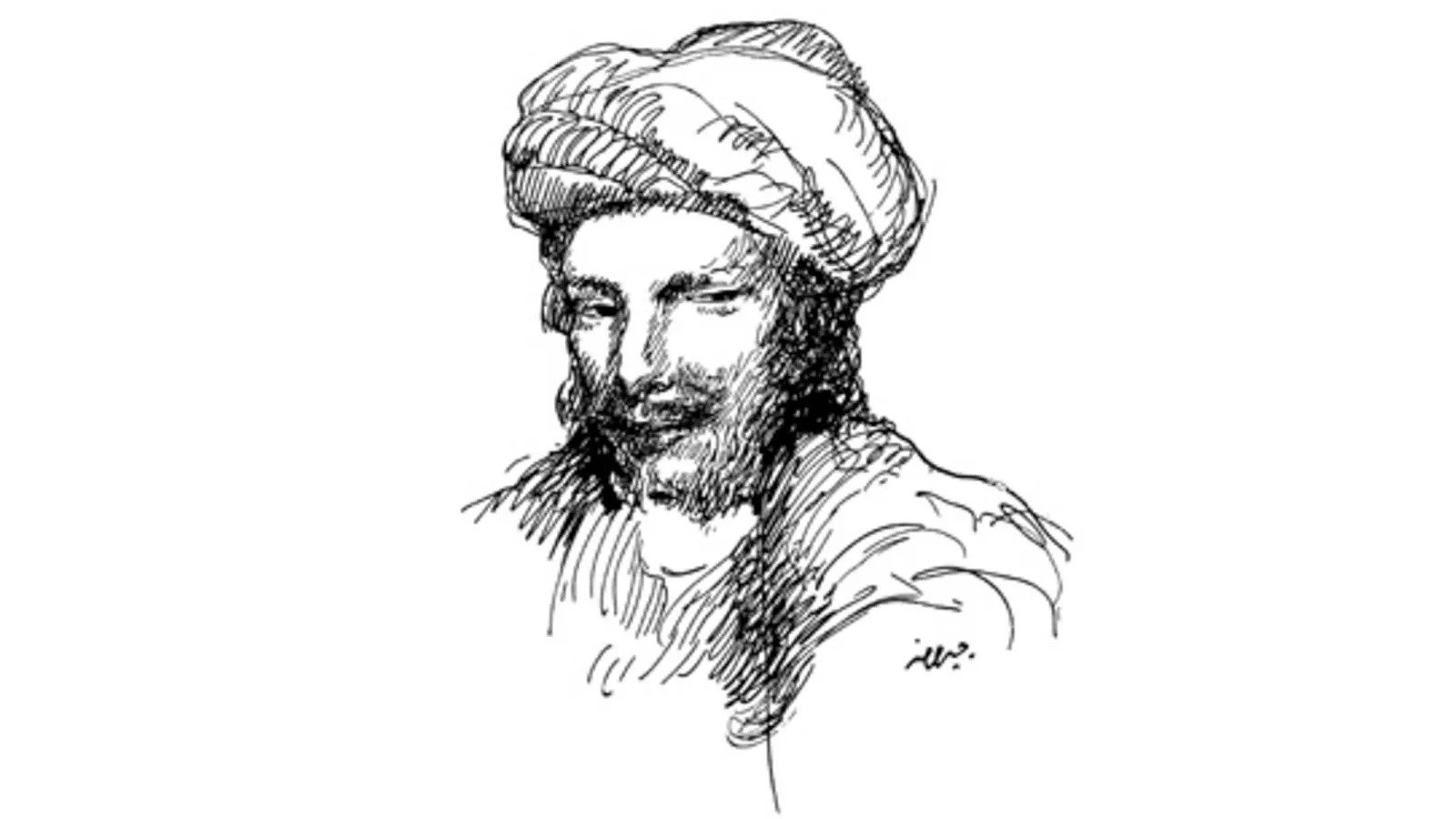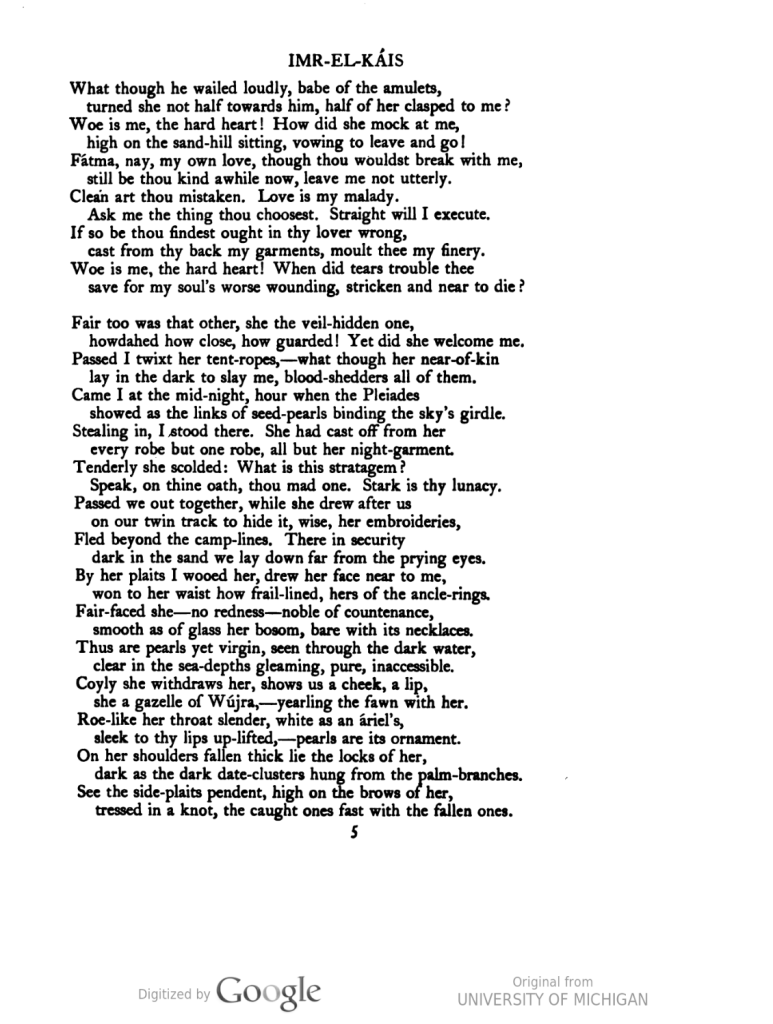Arabic Love Poems Throughout Time [Post by Zara Fields]
Overview of Collection
Poetry has been used as a way to reflect Arab history, and serve as a connection to heritage and self-identity. The theme of love is a tradition within Arabic poetry, and can provide an insight into the evolution of Arab culture and history. These poems have continued to evolve over time, reflecting the culture and norms around love of the eras they were written in. In my HathiTrust collection, I chose to focus on various love poems from famous Arab authors throughout time, along with some of their popular translations. I aimed to gather a few poems from different time periods to show a broad range of literary styles, and examine how the topic of love has evolved in Arabic poetry.

Connecting to Sawyer Collection & Seminar
One of the titles this collection can be connected to is the translated text of the Crescent Moon by Rabindranath Tagore to Chinese. This title is a poem, which is what my collection features. But what I found interesting, and why I was able to connect it to my collection is that this a translation. Much of my collection also consists of translations of various poems to English, but also other languages. Some keywords they could share were: poetry, translation, and 1900s poetry.
Going back to the Sawyer Seminar Talk, Heather Christenson discusses how titles come to be digitized within HathiTrust. This was especially relevant to me as it seems there are thousands of titles within collections scattered across HathiTrust, and yet it continues to be difficult to find specific titles in Non-roman languages, especially those in Arabic I found. I believe this is one of the main goals of this class, and to get people thinking about how to make these items more discoverable. But it wasn’t until I watched the talk and began adding more to my own collection that I realized how important this is.
It was also very interesting learning about Romanization from Barbara Alvarez and Leigh Billings, as this was something I’d never heard of until now. I don’t know why, but when I thought about translators and translated texts, I always imagined a tired librarian working tirelessly into the night, translating them by hand. While I imagine this still might be true, it’s cool to see how there are established methods that people have come up with over time. And I supposed that is what allows digital databases like HathiTrust to exist, as people have done the work of creating standardized systems that are much easier to turn into code and algorithms.
There are a few titles from my own collection (link) I would add to connect to the Crescent Moon Translation:
This is a link to a catalogue record of a famous translation Imru’ al-Qais’ poems by Charles Greville Tuetey. Imru’ al-Qais is one of the most famous poets in classical Arab literature, and is known for many of his odes. This directly connects to the Crescent Moon title as it’s another translation of a famous poem (https://catalog.hathitrust.org/Record/000575526).
Another potential title would be this image of a portion from another Imru’ al-Qais’ poem. This is an English translation of Imru’ al-Qais’ ode from the Mu’allaqat (The Hanging Odes) a famous collection of seven classical odes hanging in the Kaaba in Mecca. (Link to pdf) This poem was written a few centuries before Islam became prevalent, and many of the topics he discusses clashes with some modern Islamic values. Nonetheless, al-Qais’ provides a key insight into pre-Islamic life, and his poetry today is still considered an important part of Arab literature.

Here is also a screenplay to a catalog of the Mu’allaqat poems. While this isn’t directly related to Crescent Moon other than being a poem, it is a notable find. These poems serve as key insight into daily aspects of life pre-Islam, and are renowned in Arab literature. They are some of the first written pieces of classical Arabic poetry, and thus a keyword to describe this piece would be classical.
Connecting to other students
In Anuja’s post, An Exploration of South Asian Folklore, she discusses her collection on Hindu folktales. Besides including languages that read from right to left, there is no much overlap in the categories of our collections. However both our collections could be considered “emotional content”. They both focus on showcasing pieces that elicit a specific feeling. For mine this is love and how the writers at different periods experienced it and expressed it in their poetry. For Anuja this could be how folktales allow newer generations to feel a sense of connection to older generations who pass down the stories.
In Michael’s post, Sufism through Space and Time, pieces by Sufi authors through time are showcased. These collections are directly connected as some of the great Sufi poets take inspiration from pre-Islamic Arabic poetry. Abu Nuwas is a notable author who is renowned for his love poems. However, his work was a bit controversial as it mentioned many topics that were considered taboo at the time such as homosexuality. Landmark works by Abu Nuwas have been used as inspiration for the Sufi literary style.
Arabic Love Poems Throughout Time [Post by Zara Fields] Read More »



You must be logged in to post a comment.